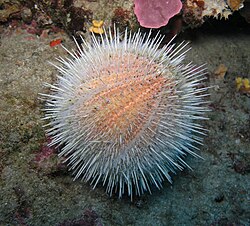| Echinus melo | |
|---|---|
 | |
| Scientific classification | |
| Kingdom: | Animalia |
| Phylum: | Echinodermata |
| Class: | Echinoidea |
| Order: | Camarodonta |
| Family: | Echinidae |
| Genus: | Echinus |
| Species: | E. melo |
| Binomial name | |
| Echinus melo | |
Echinus melo, melon sea urchin, is a species of sea urchin in the family Echinidae.
